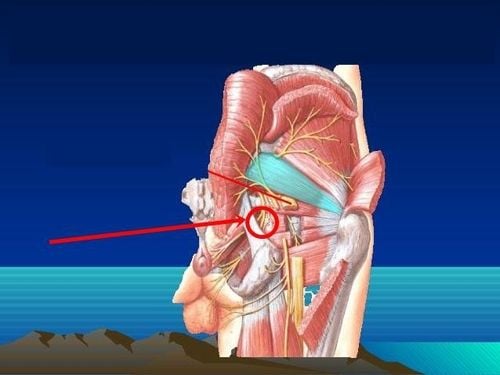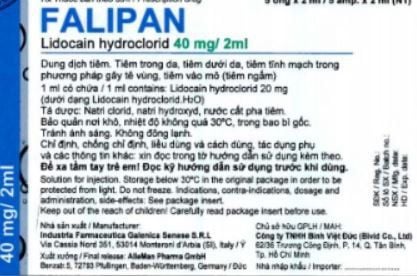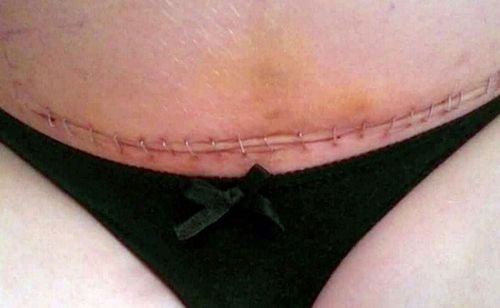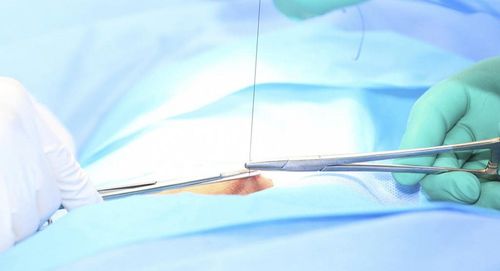This is an automatically translated article.
The article is expertly consulted by Anesthesiologist, Resuscitation and Anesthesia - Department of General Surgery & Anesthesia - Vinmec Hai Phong International General Hospital.
Spinal anesthesia is a pain-relieving technique that is performed before a cesarean section to help pregnant women give birth easily, without feeling pain.
1. What is spinal anesthesia for caesarean section?
During cesarean sections, women are usually given spinal anesthesia to relieve pain. The doctor will inject anesthetic into the woman's spinal cord to make the woman immobile, completely losing feeling in the lower half of the body. The woman is still awake, can see, hear and feel the doctor's manipulations, but there is no pain. The doctor will perform a caesarean section and remove the baby from the womb easily. You will be able to feel again when the anesthetic wears off.
Compared with anesthesia, anesthesia is a measure of pain relief during childbirth that brings more advantages to pregnant women. Pregnant women are still fully awake, blood pressure and heart rate are regulated, minimizing danger to both mother and baby. After anesthesia, women may experience some side effects.
2. How is spinal anesthesia during caesarean section performed?

First, the anesthetic site will be carefully disinfected to ensure absolute sterility, avoiding infection and infection.
The doctor will numb the area and inject anesthetic into the subarachnoid space, near the spinal cord of the pregnant woman. Anesthesia, when injected, will numb the nerves to help relieve pain in the lower body of the mother, especially the parts directly related to the childbirth process. The process of spinal anesthesia is painless, women only feel a little stinging, completely within the tolerable threshold.
Trắc nghiệm: Đau lưng sau sinh mổ và những điều cần biết
Sau sinh mổ, bà mẹ không chỉ đau đớn với vết khâu bụng dưới mà còn đối mặt với những cơn đau lưng. Mức độ đau lưng sau sinh mổ theo thống kê chiếm đến hơn 70% các trường hợp. Trả lời nhanh 5 câu hỏi trắc nghiệm sau sẽ giúp bạn có thêm kiến thức để hạn chế tình trạng này.The following content is prepared under supervision of Thạc sĩ, Bác sĩ y khoa, Tạ Quốc Bản , Sản phụ khoa , Khoa Sản phụ khoa - Bệnh viện Đa khoa Quốc tế Vinmec Phú Quốc
3. Side effects after spinal anesthesia after giving birth
3.1. Nausea, vomiting Immediately after the anesthetic is injected into the spine, women may feel nauseated, even vomiting, often accompanied by a drop in blood pressure. This is a fairly common reaction, but it will quickly disappear when blood pressure is raised with vasopressors and intravenous fluids, without affecting the health of the mother and the fetus.
3.2. Headache Most of the cases of caesarean section reported that the mother had a headache as a side effect of spinal anesthesia. The main cause is cerebrospinal fluid leaking through the dural perforation, reducing the buffering barrier layer of sensory nerves, increasing cerebral pressure, causing patients to feel headache, especially in the surrounding area. around the forehead, behind the eyes, or at the base of the skull. Many women still have pain in the neck area. The pain can be long-lasting or intermittent, sharp pain.
Headaches make pregnant women tired, possibly nauseated, sensitive to light. This side effect usually appears after a few days after the cesarean section, in some cases it appears soon after giving birth and will disappear after a few days.

3.3. Chills Immediately after a cesarean section, while lying on the operating bed, you may experience chills. When returning to the postoperative room or normal bed, the pregnant woman should cover herself with blankets, tight clothes, and socks to avoid catching a cold. At this time, the pregnant woman's body is very weak, so it is easy to have bad effects on health
3.4. Itching Anesthesia can make you feel itchy and uncomfortable due to the pain reliever added to the anesthetic. The itching will gradually subside and disappear after about 1-2 days. However, there are still many cases of women with severe and persistent itching.
3.5. Mild respiratory and circulatory failure If the anesthetic moves higher in the spinal cord than intended, the patient may experience high or total spinal anesthesia.
When suffering from this side effect, pregnant women will have difficulty breathing, arm numbness, arm, shoulder and torso movement. Accompanied by nausea and vomiting. If oxygen is given and given intravenously to regulate heart rate and blood pressure, this will also be stable and not cause concern.
3.6. Back pain Most women after giving birth feel back pain, including cesarean delivery or normal delivery without spinal anesthesia. So it's still not clear whether spinal anesthesia is the cause of back pain.
Pregnant women can have mild pain, dull pain, some people have severe pain, the pain is long and continuous.
In addition to the side effects mentioned above, pregnant women may also experience a few other symptoms such as numbness in the limbs, urinary retention...

4. How to limit the side effects of spinal anesthesia after cesarean section
During spinal anesthesia, if you feel any discomfort or pain anywhere, you should tell your doctor right away so that the device, medicine tube or other problems related to the anesthetic can be checked.
To limit the leakage of cerebrospinal fluid, which can cause many side effects. When the doctor injects spinal anesthesia, the woman should lie still, not move, which can deflect the injection.
After giving birth, pregnant women should rest a lot, eat enough nutrients and replenishment to restore health. Do not sit or stand for too long because the bones and joints are still weak and have not fully recovered from anesthesia. Light exercise can be done.
If your limbs feel numb, you should massage gently, drink lots of water. If this condition persists for a long time, it is advisable to examine or use some physical therapy to avoid affecting the musculoskeletal system and making the mother feel tired after giving birth.
When you see unusual signs such as: difficulty breathing, pain or redness at the injection site, severe headache, weakness and fatigue, bladder and bowel problems, you should contact your doctor. immediately, if you have been discharged home, you should return to the hospital for a checkup as soon as possible.
Please dial HOTLINE for more information or register for an appointment HERE. Download MyVinmec app to make appointments faster and to manage your bookings easily.














